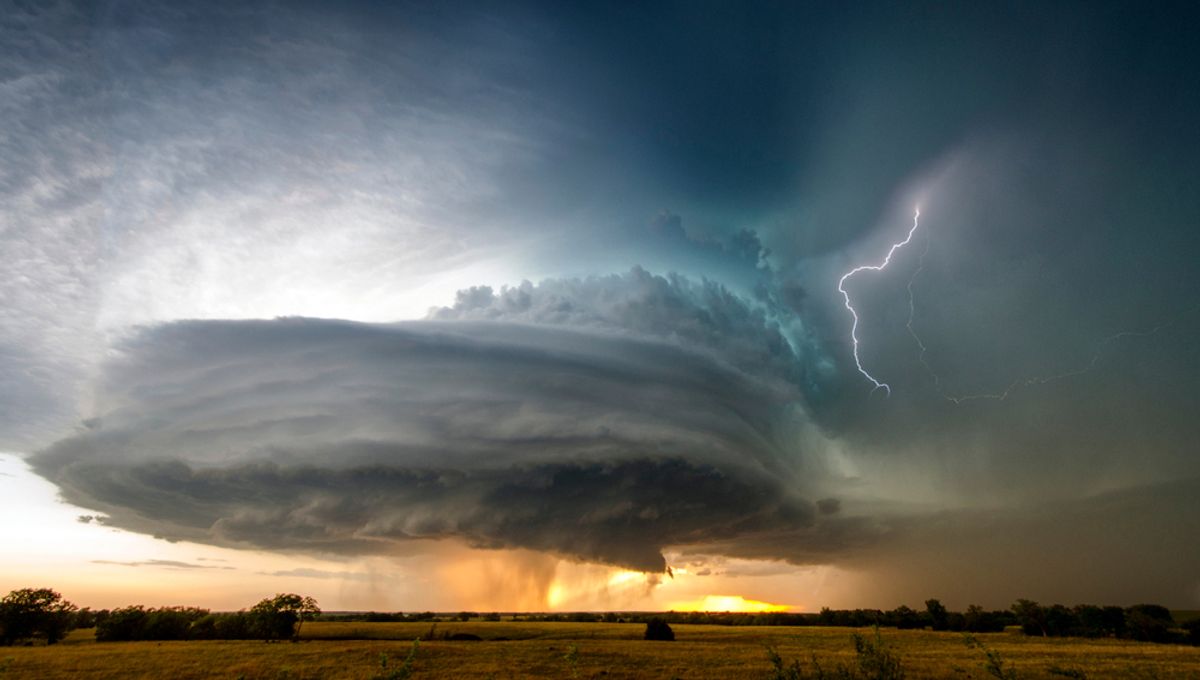
As the US starts to heat up due to climate change, the country can expect to endure more dangerous hail storms and killer tornadoes caused by supercells, according to a new study. The new research indicates that lethal supercells are likely to increase in the late winter and early spring months, especially in eastern parts of the country that are not too familiar with tornados.
Supercells are the wildest of nature’s storms. They are an intense form of a storm that’s turbocharged through the presence of a deep, spinning updraft known as a mesocyclone. Given their propensity to create ferocious winds, very large hailstones, and even violent tornadoes, supercells have the potential to be the most severe and damaging of all types of storms, although they are the least common.
Updraft speeds in supercell storms can reach a blistering 40 meters (130 feet) per second, with the whole storm structure capable of reaching an altitude of altitude 8,000 to 10,000 meters (26,000 to 33,000 feet).
Just this past weekend, a deadly tornado and severe storms swept across the South of the US, reportedly killing at least 26 people and injuring dozens more. It’s clear that this deadly weather event was the product of a monstrous supercell storm.
The freshly published research indicates that supercell events like this could perhaps become more common in certain parts of the US due to warming temperatures. Nationwide, the US could see a 6.6 percent increase in the number of supercells under a moderate warming scenario. In the event of severe warming, higher than the levels we currently see, the US could experience up to 14 percent more.
The reason for this uptick is warming temperatures linked to the climate crisis. It’s known that increasing temperatures make Earth’s lower atmosphere warmer and moister, which provides the potential for more energy for storms, heavy rainfall, and certain extreme weather events.
Some of the most significant changes to supercell activity will be where these supercells are hitting, not necessarily how often.
Northern Texas, Oklahoma, Kansas, Missouri, parts of Louisiana, Iowa, Nebraska, and eastern Colorado are sometimes referred to as the Tornado Alley because of the frequency of tornadoes seen here. However, facing warming climates and the change in supercell behavior, this belt of tornado activity could shift slightly east.
The change in temperature may result in tornadoes becoming more common in more easterly parts of the US, such as the Ozarks, mid-South, and Tennessee valley. As the Associated Press pointed out, this could mean tornados will impact more densely populated areas, including the cities of Dallas-Fort Worth, Little Rock, Memphis, Jackson, Tupelo, Birmingham, and Nashville.
Conversely, there is likely to be a decline in supercell activity in the Great Plains, which is typically seen as part of the tornado belt.
“The data that I’ve seen has persuaded me that we are in this experiment and living it right now,” study author Walker S. Ashley told the Associated Press. “What we’re seeing in the longer term is actually occurring right now.”
The new study was published in the journal Bulletin of the American Meteorological Society.
Source Link: Buckle Up For More Supercell Storms In The US Driven By Climate Crisis